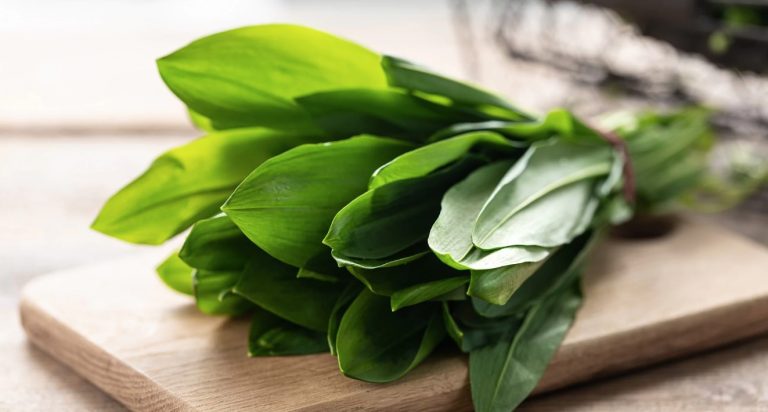You can often find wild herbs that you can collect in spring on your own doorstep. They are delicious and very healthy at the same time. We introduce you to six herbs and suitable recipes.
It’s amazing what’s growing outside: In Europe, there are around 500 species of wild plants that you can collect throughout the year. In addition to the well-known medicinal and medicinal plants, this also includes wild herbs. These bring very different flavors, ranging from sweet to bitter.
But beware: Not all wild plants are edible! So before you start your search, you should read our article for tips on collecting, identifying and eating wild herbs.
In the following, we will introduce you to six spring wild herbs and how you can use them for culinary purposes.
Wild garlic: The classic spring wild herb

Wild garlic is one of the absolute classics among the wild herbs in spring. You will find the plant preferably in shady (meadow) forests. What is special about wild garlic is its unique aroma of onion and garlic. You can eat both the young leaves and pickle the wild garlic buds. Wild garlic is also good for your health: it is said to have a cleansing and detoxifying effect. Once picked, you can use wild garlic in a variety of ways: either as a spread or homemade wild garlic pesto, as a wild garlic soup or as a salad accompaniment. If you want to be a little more creative, you can also try more unusual recipes: Read our article to find out which wild garlic recipes are available.
Caution: wild garlic looks similar to many a poisonous double, for example the lily of the valley. If in doubt, you can recognize the wild garlic when you rub the leaves between your fingers. If you smell garlic then, there is a high probability that it is wild garlic. More on this here: Recognizing wild garlic – and not confusing it with the poisonous lily of the valley.
Dandelions with bright yellow flowers in spring
The dandelion is widespread with its bright yellow flowers. With their sweet taste, the flowers are ideal as a spice or in a salad. You can eat raw or cook the yellow flowers found in green meadows. However, please make sure to only use the flowers in moderation, as the oxalic acid they contain should not be eaten in large quantities.
If you want spring to come to your house, you can try your hand at a homemade dandelion salad or use the special aroma to make dandelion honey yourself.
Ribwort plantain as an ingredient for quark or scrambled eggs
You can get the buckhorn at the edges of paths or in meadows. People have always used its crushed leaves as a medicinal herb, but you can also eat buckhorn. Although it does not have a distinctive taste of its own, it goes well with other herbs.
Use the tender leaves, for example, in salads, as an ingredient in quark and scrambled eggs or for buckhorn tea. You can also use the spring wild herb in case of illness: It helps you as a home remedy for coughs in the form of plantain cough syrup.
Giersch: Edible weeds instead of weeds
For gardeners, ground elder is often nothing more than weeds, as the herb spreads across the board. So you have a good chance of finding it in shady meadows in spring. The taste of Giersch is reminiscent of spinach, so you can use it in many ways. You can make many delicious recipes from the vitamin C bomb, for example a wild herb salad or potato soup. You can read more goutweed recipes in the linked article.
Collect aromatic garlic mustard in spring
The completely edible garlic mustard can be found in masses as a weed on forest paths in spring. Its aroma is sharp and with a light touch of garlic. Younger leaves have a finer flavor and are less pungent than older ones. In the kitchen, you can use the garlic mustard to make wild herb pesto, for example, or to refine salads. In the linked article, we tell you what else you should know about the application and mode of action of garlic mustard.
Meadowfoam herb as a pepper substitute

Meadowfoam grows in abundance in meadows in spring. You can recognize it from afar by the lush, white flower clusters. Did you know that weeds are an important food source for bees and insects? You can also harvest the leaves and flowers, which taste like cress and use them in your home kitchen. For example, you can use the hot seeds as an alternative to black pepper for seasoning. In small quantities, the meadowfoam herb also tastes great in herb quark or as a spread.

